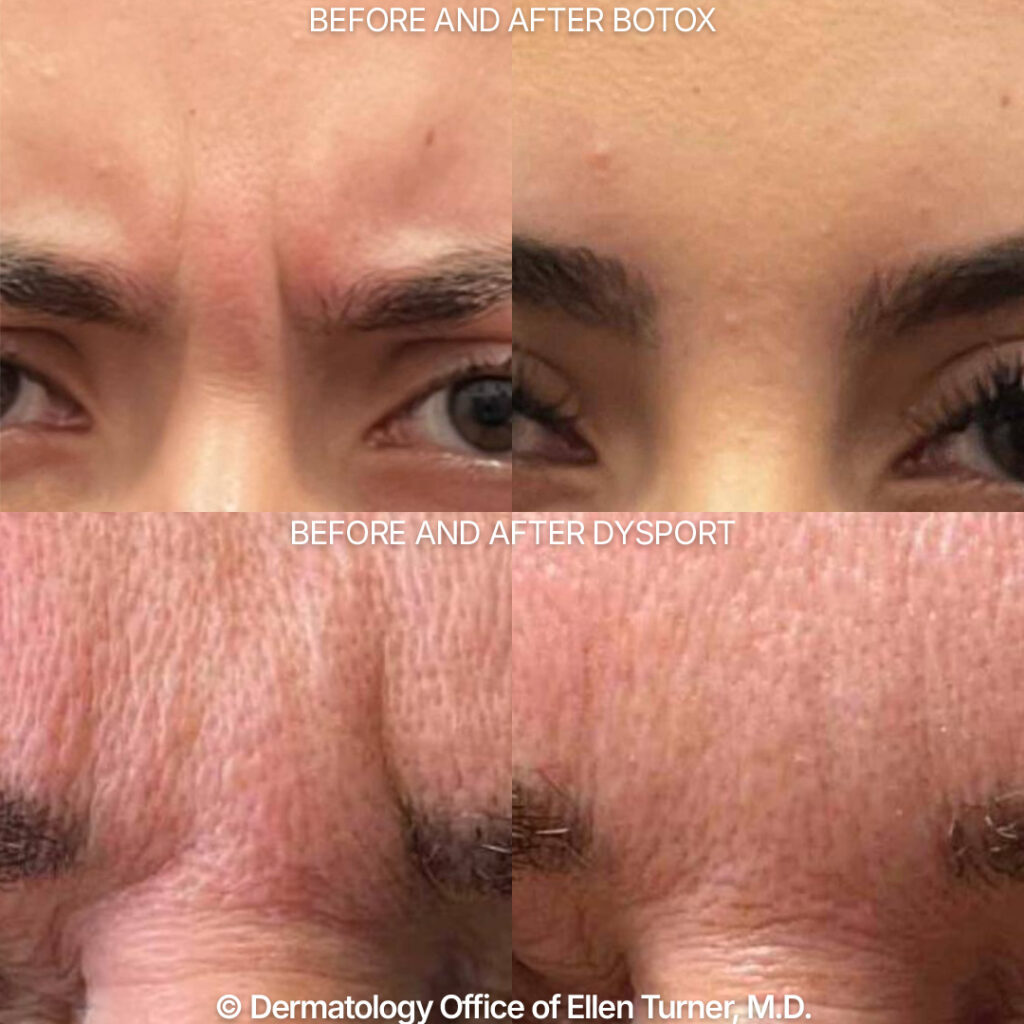
In today’s blog, I would like to compare and contrast two neuromodulators, Botox and Dysport.
There are several commonalities between Botox and Dysport. They are both purified proteins. They are both neuromodulators which rest muscles of facial expression, and they are both FDA approved for frown lines, also termed the glabellar region. They both must be constituted with saline. There is some variability amongst providers as to whether to use saline with or without preservative, but the vast majority use saline with preservative because it is believed to be less painful to the patient when injected. The amount of saline with which a provider chooses to constitute Botox or Dysport can vary as well, but the bottom line is always the number of units injected and the fact that they both work effectively in the glabella.
Once constituted, the neuromodulator is injected into the muscles of the glabellar area, specifically the procerus and the corrugator muscles, causing these muscles to then rest over a period of either 24 to 72 hours.
To contrast the two neuromodulators, Botox emerged first into the marketplace. Many consumers referred to all neuromodulators simply as Botox, as this was the very first one to emerge into the marketplace, until many years later, when Dysport made its entrée. A similar analogy would be as Kleenex was for facial tissue. However, I would be remiss if I did not fully evaluate the merits of Dysport and how it differs from Botox, as there is no one single neuromodulator that is essentially one-size-fits-all. Every patient is unique and different, and the aesthetic patient should be very discerning when looking at the available neuromodulators in the marketplace. A board-certified healthcare provider is a good place to begin asking questions. Always make sure your provider is thoroughly trained on the muscles, nerves and blood vessels of facial anatomy, as all neuromodulators are truly medications, and aesthetic medicine is still very much the practice of medicine.
Clinical studies for Botox showed an average of 20 units when injected into the glabella to achieve proper results. Dysport is dispensed at 3 times the ratio of Botox for the exact same pricing, so that equates to 60 units for the same price to achieve the same clinical results. Botox, when injected, spreads or diffuses approximately one centimeter in diameter. Dysport will spread slightly farther than that. Clinical trials show that Dysport may act slightly faster than Botox, possibly within 24 hours versus 72 hours for Botox. Dysport may continue to maintain its effect for up to 5 months versus 4.5 months for the duration of Botox.
Both neuromodulators are contraindicated in pregnancy, during breastfeeding, in patients with myasthenia gravis, Lambert-Eaton, ALS, in patients with any serious muscle or nerve conditions, or patients with an allergy to Botox or Dysport, such as swelling of the tongue or lips or difficulty breathing or swallowing. Common temporary side effects can include headaches or flu-like symptoms with both neuromodulators, and if these symptoms last longer than 24 hours or are not alleviated with Tylenol, the patient should immediately contact their injecting physician.
By keeping these helpful tips in mind, it may be easier to make a better, more informed decision when selecting the best neuromodulator to fit your purposes, whether it be Dysport or Botox. Contact the Dermatology Office of Dr. Ellen Turner at (214)373-7546 or www.dermofficedallas.com to schedule a cosmetic consultation to determine which neuromodulator is right for you.
Written by Dallas Dermatologist, Ellen Turner, M.D.

